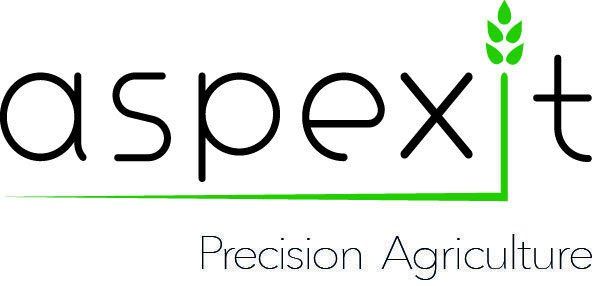Ah, Precision Agriculture! We hear about it all the time right now. Agriculture 4.0 (I don’t even know what number we’re at anymore), super precise machines, connected sensors….. Digital technologies and innovations create a buzz in agriculture (Note: Sprinkle it all with a little bit of Big Data, Deep Learning or Artificial Intelligence to shine even brighter in society). But in fact, what are we talking about in Precision Agriculture? In this post, I wanted to share my vision and my questions about Precision Agriculture. I do not have a clear vision on the subject, far from it, but I find that the subject raises questions.
Challenges of the agricultural sector
The United Nations estimate that the world population could reach 9.8 billion in 2050 and 11.2 billion in 2100 (World Population Prospects: The 2017 Revision). If these projections are met, global food demand will necessarily increase significantly. Although food security is partly a distribution problem, it would be harmful not to also encourage increased food production because no single approach will be fully effective in addressing food insecurity (Garnett et al., 2013). To address this last problem, two main options can be considered (we will discuss them again at the end). The first would be to extend the area of cultivated lands. Obviously, this option would necessarily be at the expense of uncultivated areas and would be accompanied by a series of environmentally disastrous actions such as deforestation, biodiversity loss, habitat destruction and fragmentation (although this does not prevent a number of countries from doing so…). The second option would be to increase the level of production on the same cultivated area, without affecting non-agricultural land (which is already much more reasonable).
This challenge is enormous since the agricultural sector must face this growing food demand while taking into account many societal and environmental issues (water scarcity, loss of biodiversity, land degradation…) and being economically viable in the long term (EU SCAR 2012; FAO, 2017). Environmentally intensive agriculture has been a response to all the challenges I have just mentioned. Although some criticize this approach as contradictory in terms (Collins and Chandrasekaran, 2012), this solution seeks to increase food production while limiting environmental pressures (Garnett et al, 2013; Pretty and Bharucha, 2014). In simpler terms, ecologically intensive approaches have as their main objective to produce “more” with “less”. Precision Agriculture could be one of these approaches…… (Cassman et al., 1999; McBratney et al., 2005; Robert, 1999)
What is Precision Agriculture?
Well, we’ll start by crossing some definitions! The term “Precision Agriculture” was coined in the early 1990s (Robert 1993) as a practical response to the impact of soil variation on agricultural production (Whelan 2018). Although this variability had long been known by farmers and agronomists (Fairfield Smith, 1938), who used to work on small plots and fields with which they were familiar, the Green Revolution led agricultural actors to merge their small production areas to facilitate on-farm agricultural operations (some companies today offer Precision Agriculture services by studying the history of plot regrouping). Plots with variable production conditions (soil, topography, etc.) were therefore merged and worked in a uniform way. Over the past thirty years, the development of information technologies: data acquisition, mapping, positioning and storage systems, has made it possible to measure and describe this “lost” variability in order to make it quantifiable and take it into account in operational decisions in the field. These technological changes are the basis of the concept of Precision Agriculture”.
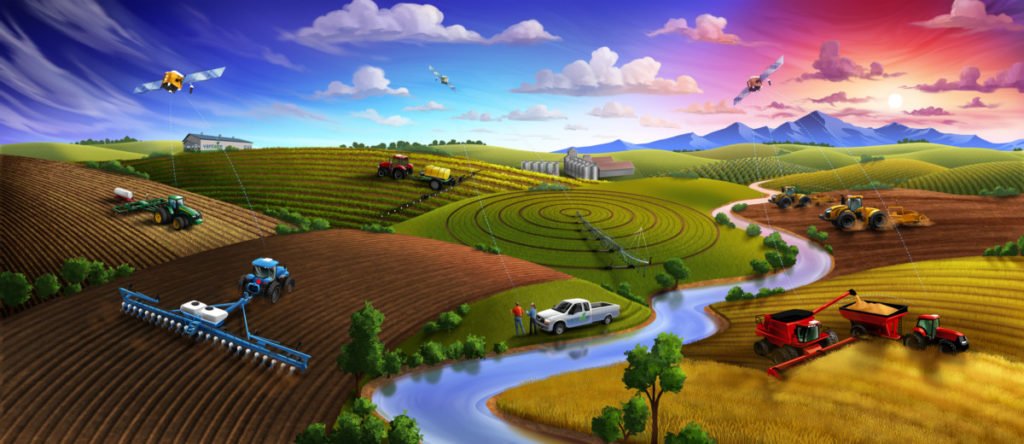
Source : Trimble
Precision Agriculture can be more formally defined as a management strategy that uses information technology to integrate data from multiple sources into decisions related to agricultural production (National Research Council, 1997). From a more generic perspective, it could also be characterized as “the type of agriculture that increases the number of (correct) decisions per unit area and per unit time with associated net benefits” (McBratney et al., 2005). The latter definition clearly highlights the two underlying concepts of precision agriculture: (i) spatial variability within the plot (decisions per unit area) better known as within-field variability, and (ii) temporal variability (decisions per unit time). Bringing an average dose to the plot, but a dose that varies over time according to the development stages of the crop, is already Precision Agriculture! A definition of 2019, certainly the most up-to-date, proposed by a panel of 45 scientists from around the world at the request of the International Society of Precision Agriculture (ISPA): “Precision Agriculture is a management strategy that gathers, processes and analyses temporal, spatial and individual data and combines it with other information to guide site, plant or animal specific management decisions to improve resource efficiency, productivity, quality, profitability and sustainability of agricultural production”.
Precision Agriculture is generally limited to “variable-rate management” because this concept is very operational and relatively easy to understand. It must be understood that precision agriculture is not limited to this! Vehicle guidance systems, traceability and product quality, among others, are also part of Precision Agriculture (McBratney et al., 2005; Tullberg et al., 2007). It should be noted that today, the concept of Precision Agriculture also extends to other systems than field crops, in particular livestock (Wathes et al., 2008) or perennial crops, such as vines (Tisseyre, 2012). From a more theoretical point of view, several advantages could be expected from Precision Agriculture:
- Technique: Variable-rate management could help to generate better yields and improve product quality (Stoorvogel and Bouma, 2005),
- Economic: The rational use of inputs could help reduce fixed and variable costs (Koch et al., 2004),
- Environmental: Improving the application of inputs in space, time and dose could help reduce environmental pressures: leaching, water quality… (Basso et al., 2016), and
- Social: by stimulating the interest of the new generation in digital agriculture, limiting difficult working conditions and providing farmers with a better working environment (Grisso et al., 2009)
How can Precision Agriculture play a role in the agro-ecological transition?
Now that the definitions have been established, I think that to fully understand Precision Agriculture and evaluate its ins and outs, we must be able to position it in the existing production system. Is it ultimately a new cultural approach or a new way of producing? What is Precision Agriculture compared to Conventional Agriculture, Permaculture, Conservation Agriculture or Agro-Ecology? Are there any principles of Precision Agriculture?
To try to clarify this a little more clearly, let us look at a classification proposed by Hill and Macrae (1986) whose objective was to detail strategies to support the transition to a more sustainable agriculture. These authors propose three distinct strategies to move away from the current conventional model:
- “Efficiency” strategy: the objective of this strategy is to optimize the existing production system by limiting the consumption and waste of inputs and resources but without changing the functioning of the existing system (e.g.: reasoning the contribution of chemical weed control in the plot in space, time or dose for example)
- “Substitution” strategy: the objective of this strategy is to replace the use of non-renewable and/or high environmental impact resources with much more limited impact resources (e. g. to replace a chemical weed control method with mechanized agricultural robots)
- “Re-design” strategy: the objective of this strategy is to address the intrinsic causes of the problem and to rethink the production system so that it no longer has to rely on external inputs (e.g. setting up associated crops to limit the appearance of weeds)
In view of this classification, it is relatively clear that Precision Agriculture can be defined as an “Efficiency” strategy. Approaches such as Permaculture or Agro-Ecology, on the other hand, will be classified as “Re-design”.
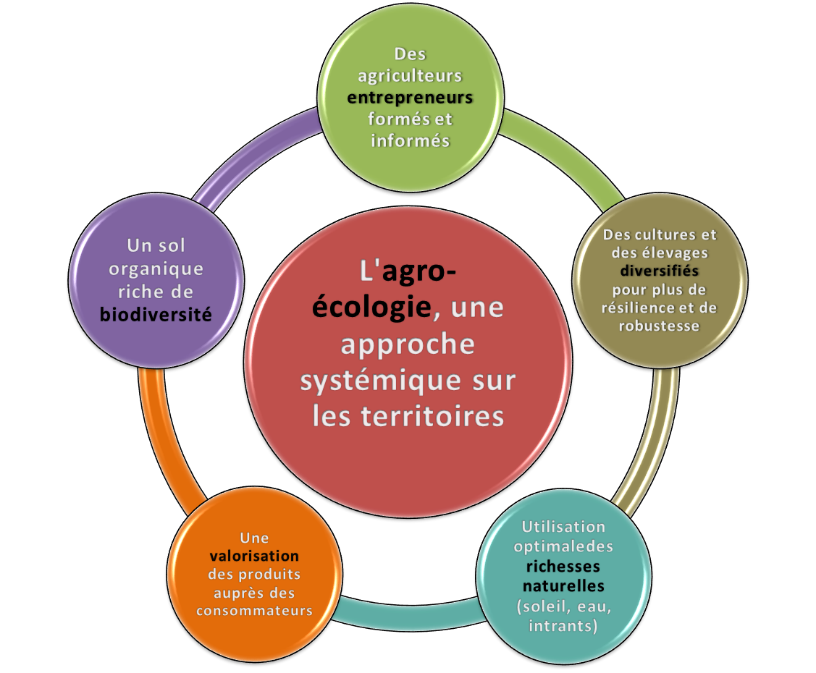
The agriculture of the future, I think no one doubts, will be a more respectful, sustainable and responsible agriculture for the land and people. This agriculture will be much less dependent on inputs and will return to the natural functions of its ecosystem (“Re-design” strategy). Nevertheless, any system, in order to be better known, understood and improved, will need to be quantified, measured and described. And it is precisely here that an “Efficiency” strategy such as Precision Agriculture can bring all its added value, because it is not there to propose a new way of producing but to improve the system that we have chosen to set up. Precision Agriculture, thanks to the measurement and diagnostic tools developed (and to be developed!) and to all the scientific concepts studied (geostatistics and spatial interpolation, modelling of spatio-temporal phenomena, the contribution of local knowledge/expertise and On-farm-experiment on understanding the functioning of plots…) will make it possible to sublimate the agricultural production model in place.
Over the last 20 years, and even now, Precision Agriculture has mainly been associated with a “techno-centric” strategy, intensive monoculture and large geometric plots for a number of reasons: ease of implementation, cost absorption, time savings… I think it is time to really reconsider this speech. Precision Agriculture is there to provide objective data and decision-making information. And it is the human being who, at the centre of his sustainable and responsible production system, will use these sources of information to make his decision. I would also like to stress that Precision Agriculture must be seen as a set of tools and methods that can be combined with all forms of agriculture. Precision Agriculture is not at all contradictory with “Re-design” strategies such as Soil Conservation Agriculture or Agro-ecology! Many applications exist in these modes of production there and are, for some, already in place:
- use of a centimetric positioning system and an on-board camera to reseed a vegetation cover offset from the row of seedlings of the previous crop to limit the problems of seed furrow filled with thatch residues and tillering tray,
- use of a positioning system to guide a strip-till approch in order to sow from one year to the next in the strip of land already tilled during the previous sowing to disturb a smaller soil surface and ensure better bearing capacity
- …
The adoption of Precision Agriculture is a bit slow….
Despite all that can be said, Precision Agriculture still remains a niche market even if its adoption still follows a growing and regular trend (European Parliamentary Research Service, 2016, Schimmelpfennig, 2016). These trends are relatively complex to analyse in the sense that they vary according to the location (sometimes within the same country or even a region), the crop in place or the technologies used (Say et al., 2017; Schimmelpfennig, 2016). For example, satellite positioning systems or yield sensors are mentioned more often than variable rate management systems. The use of yield sensors also varies considerably by crop, with corn being the main crop monitored by such sensors in the United States (Schimmelpfennig, 2016). The European Parliament’s Research Service estimates that despite the wide range of precision agricultural solutions offered, only 25% of European farms use technologies with a Precision Agriculture component. In France, the Observatory of Digital Uses in Agriculture, set up in 2016, estimates that only 10% and 1% of agricultural surfaces in arable crops and vines respectively are monitored by remote sensing (http://agrotic.org/observatoire/). And these numbers decrease even more for the surfaces that are modulated; it is not because farmers monitor the heterogeneity of their plots that they necessarily modulate. What about a large proportion of farmers who use modulation services to justify themselves from a regulatory point of view, i.e. who seek to have a dose at the field level for reglementation considerations and who do not take into account the variable rate map proposed to them. According to the same observatory, we learn that less than 1% of agricultural land has been monitored for soil conductivity/resistivity. And cooperatives will not deny it (almost all the cooperatives I have contacted in France consider that less than 10% of their members implement a Precision Agriculture approach on their plots).
How, since the time these technologies have been implemented, can these trends be explained? What are the factors that lead to the adoption (or non-adoption) of these technologies? When we look at the scientific literature, many reasons are given (which again differ from one context to another): farm size, age of farmers, fear of change, data confidentiality management, compatibility between tools/software, technology transfer, political issues… (European Parliamentary Research Service, 2016, Say et al, 2017, Schimmelpfennig, 2016). Even if some of these reasons make sense to me, I nevertheless think that we should rather look for the lack of feedback and the lack of support for the sector (concerning support, just look at the number of existing services to be very quickly lost). Some authors have criticized existing analyses of the adoption factors for Precision Agriculture for not following a rigorous approach to studying the diffusion of an innovation (Pathak et al., 2019).
Despite the interest that a number of pilot farmers may have, how can we go after the soft belly of farmers who are not interested or motivated? How can a farmer be encouraged to change/modify his approach if he is not convinced of the result? Farmers want to be able to answer questions like: What would have been the difference if I hadn’t changed my approach? And that’s the complexity of it! Each farmer operates in a different pedo-climatic, economic and social context. Perhaps we should look for On-Farm Experiments, with the associated difficulties: the need for specific skills, experiments that require more time and agility (we will discuss this a little further on). Perhaps we also need to ask the questions differently. For example, instead of seeking the interest for a farmer to implement a Precision Agriculture strategy, why not ask himself about risk he is taking in not doing so?
It may be noted the interest of certain structures that were put into place so that (i) companies can challenge their innovations in viticulture (Digilab in Bordeaux), (ii) winegrowers discover the existing operational tools for managing their production (Mas Numérique in Villeneuve-lès-Maguelone) or (iii) digital tools can be tested in real scale (Digifermes in France).
Precision Agriculture: Between approval and contradiction
In the scientific literature, it is clear that many different studies have corroborated the benefits or gains of Precision Agriculture strategies detailed in the introduction. For example, Basso et al. (2016) showed that nitrogen leaching was lower and net farm income was higher in a nitrate vulnerable zone. In their study, Koch and colleagues (2004) concluded that applying variable rates of nitrogen was more cost-effective than conventional uniform application. Bramley et al (2008) demonstrated the relevance of spatial data to limit environmental damage in sugar cane production, especially if agricultural management policies were applied at the within-field level. In their work, Bongiovanni and Lowenberg-Deboer (2004) define Precision Agriculture as an environmentally friendly practice.
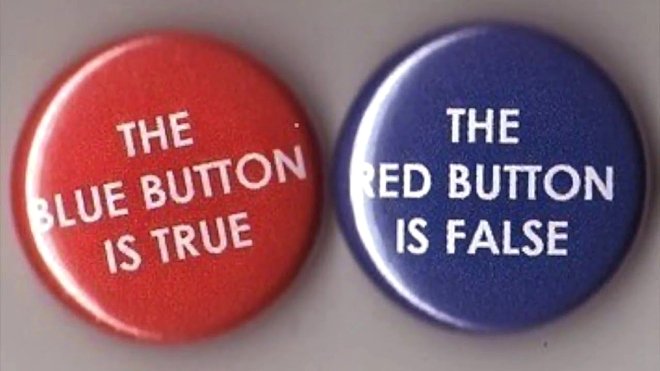
If we want to remain honest and open on the issue of Precision Agriculture, we also observe that some authors provide more mixed conclusions. For example, Larson et al (2016) showed that the economic interest in investing in automatic section cutting technologies to improve field applications clearly depends on the geometry of the plots. According to these authors, for regular and/or geometric plots, the economic gains are not necessarily there. In another study, variable rate management systems were not systematically considered more interesting in terms of efficiency gains and water quality improvements (Wang et al., 2003). Tozer and Isbister (2007) studied several combinations of scenarios between plot shape and yield levels on the same plots to assess the economic feasibility of differentiated harvesting. In their study, some scenarios were not economically interesting. Finally, by comparing uniform management with 10-year Precision Agriculture management, Yost et al (2017) concluded that the main benefit of their Precision Farming strategy was to reduce temporal variability in yield, but that their strategy had not always resulted in an increase in the average level of yield on their plots. I would also like to insist on the fact that this is one of the only really long-term studies that can be found on the interest or not of a Precision Agriculture strategy! The gains (whatever they may be) that can be made in one year depend on the context of the year, i.e. what happens in one year may not necessarily be true in the following year.
From all the scientific literature, it is relatively clear that the benefits of Precision Agriculture diverge significantly depending on where you are, the spatial contexts or soil and climate conditions, among others (simply because these contexts and conditions are different). Hence the importance of differentiating between global and local approaches! And not always to try to apply an approach that works perfectly in one context to another context that is different from it! It remains relatively difficult to estimate precisely whether someone who commits to a Precision Agriculture strategy will necessarily benefit from it. I also think that we should stop always putting Precision Agriculture in front of a saving of resources (water, fertilizers, pesticides…). Under certain conditions, this may indeed happen, but in others, Precision Agriculture will make it possible to redistribute inputs in space and/or time (differentiated application, higher efficiency) without necessarily reducing them! We must remain transparent and honest about the interests of this strategy. When we talk about economic gain (higher production or cost savings), we must also be transparent about the entire process (what is the cost of the service, the equipment, the additional time spent…).
Discussing the benefits of Precision Agriculture is all the more difficult because not all of these benefits are so easy to study. For example, technical and economic gains are more concrete and tangible because an increase in yield or a higher net outcome can be easily interpreted by agricultural professionals. However, for environmental or social impacts, the benefit is much more complex to quantify. These aspects raise questions such as: how to take into account all the impacts of a nitrogen application (concerning the product, the soil, the air)? How to measure the working conditions of farmers? How to consider the willingness to work with digital technologies?
Precision Agriculture is often promoted as a responsible and sustainable or ecologically intensive approach. As we have seen previously, we can indeed imagine reducing environmental pressures by reasoning inputs in space, time, or even in dose (reduction of inputs, energy…). Isn’t all this paradoxical when we look at the Precision Agriculture strategy as a whole? Don’t we also need energy to collect Gigabytes of data via sensors installed in the plots, store them in databases and data centres, process them using powerful and tailor-made algorithms, then exchange information flows between machines and web platforms, and then develop applications in the field? Is it really possible to achieve a positive energy balance when we look at the savings at the output level versus the input requirements? Perhaps… In any case, in view of the energy consumption by digital technologies in the world (10% of the electrical energy consumed worldwide), the question deserves to be asked. And all the more so with the very energy-intensive block-chain systems that are popping up in agriculture.
Data quality, still a major loser…
Big Data and its 3V in agriculture, that’s what we’re talking about (can we really talk about BigData in Agriculture, it’s another subject…). Volume (a lot of data), Velocity (a lot of flows to be managed quickly) and Variety (generally heterogeneous data) are three criteria that are relatively well integrated into the common reflection. On the other hand, the ugly duckling, or the 4th V [Veracity: the quality of the data], does not yet arouse everyone’s interest. However, the quality of the data used is important, especially in a context where increasingly accurate machines are being developed. What is the point of being able to make applications at the metre level (or centimetre) if the underlying data is unreliable? The tools developed in Precision Agriculture make it possible to propose variable rate management on many different aspects: sowing, harvesting, fertilizers, pesticides, weeding, irrigation… We are mainly talking about spatialized management, but having a uniform dose at the plot level, which varies over time (temporal management), can also be considered as Precision Agriculture! It is important to be aware that the quality of the input data will necessarily impact the quality of the final decision. Any data is subject to uncertainty, whether we like it or not (sensor calibration, data resolution, correlation with existing data…) ! And this uncertainty must be measured, quantified or estimated, but also taken into account in the final decision/application so that the user can make an informed decision.
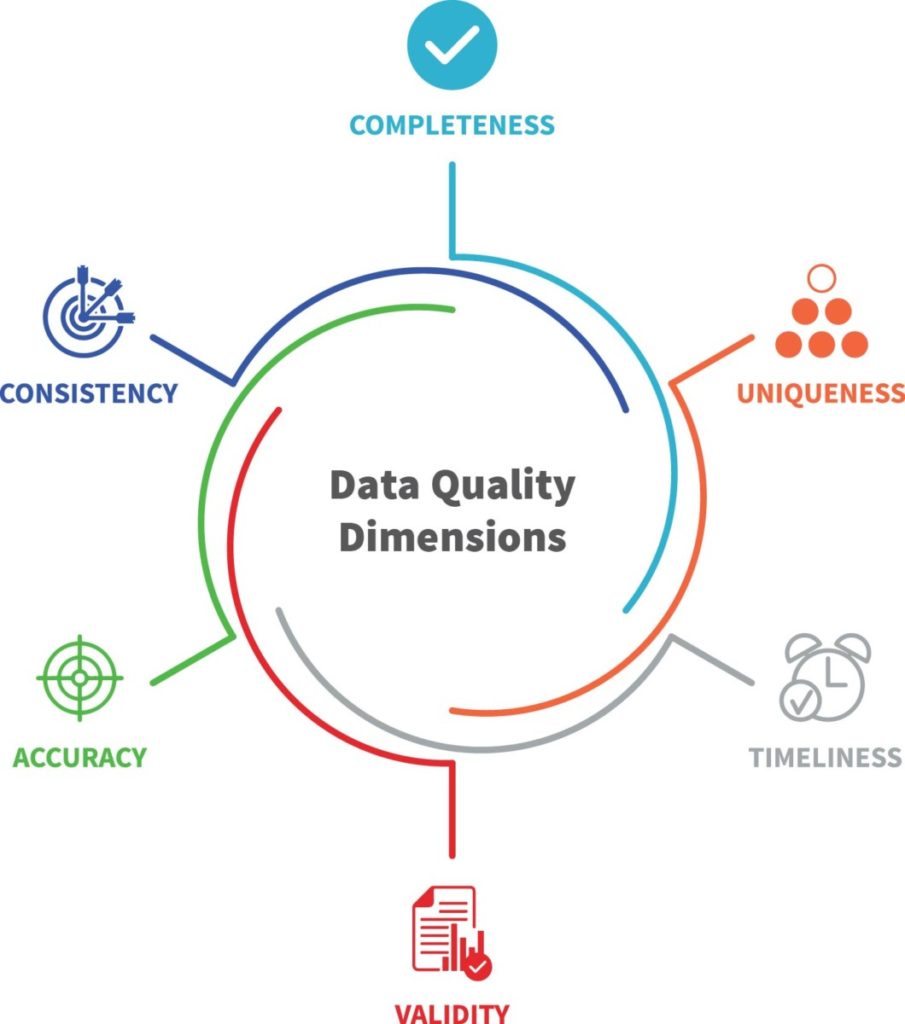
When working with measurement tools in Precision Agriculture, we are very quickly led to juggle with spatialized data, i.e. data that have an attribute value (yield, conductivity, vigour…) but also a position in space (in a plot, on a farm, in a catchment area…). These spatial data have particular characteristics: they are often noisy (data close in space are not exactly the same), they can have different spatial resolutions (the observation density per square meter is different), they can be autocorrelated (a data is not independent of its neighbour). Working with these spatial data requires special skills and requires asking questions! How to compare spatial data at different resolutions? How do I map my data according to their characteristics? How can I take into account the operational constraints of my applications? How can I consider the expertise I have on my plots? Making a map is not very complicated (there are many free or not free tools to do it). Where it gets complicated, it’s to make a good map, representative of the available information we have, and consistent with the application to be created.
To come back quickly to the expertise available on the plots (whether it is that of a farmer or an advisor for example), it is a pity that it is not yet sufficiently considered in existing methods / tools. Although the quality of the expertise must be taken into account (the boundaries of expert zones can be rather vague, some information can be subjective…), someone who has worked for several years on his plot necessarily has a great added value to bring. Precision Agriculture tools make it possible to collect objective data on production systems in order to better understand them (I insist on “better understanding” and not seeking correlations between everything and anything), but I remain convinced that it is essential to combine this information with expert data.
To go further…
In this section, I wanted to share loosely a number of topics that I think are worth thinking about. I hope that these questions will also arouse your interest!
Micro plot experiments VS On-farm experiments
I would like to engage in a debate on agronomic experiments and in particular to question the interest of micro VS on-farm experiments. In view of the pedo-climatic contexts which can be very different from one plot to another, should we still favour micro experiments to reason operational applications? The latter approaches are particularly relevant in a scientific research context, to explore and develop knowledge because they provide high quality data (albeit in relatively small quantities) on which rigorous statistical methods can be applied. But will the results of these tests really be applicable under the production conditions of other plots, even if they are relatively consistent with the study plots, especially since a number of operational constraints will be added? It cannot be hidden that on-farm experiments also raise their constraints: data in large quantities but whose quality will be less controlled, the statistical methods to be applied will not be able to be applied in a strict framework, the experiments will have to be set up with farmers… Nevertheless, these experiments will have the merit of being placed in a clear and operational production context and of producing tailor-made results (and certainly motivate the farmers involved in the process). There are examples of on-farm experiments networks that seek to favour this type of approach (for example, the YEN network in England).
New skills to work in Precision Agriculture?
With the democratization of technologies in the context of Precision Agriculture, agricultural structures are collecting more and more spatialized data. And the use of such data requires new skills (geomatics, remote sensing, spatial statistics, etc.). What should the farmer’s position be in this new ecosystem? What new skills do they need to master? Should these skills be carried by structures around the farm (cooperatives, advisory bodies, etc.)? Should we imagine a position dedicated to the manipulation of spatialized data (a geomatician or a Data Scientist with specific skills in spatial data processing…)? Would there be enough work for at least one full-time position in these structures? The need for internal skills and the need for some of these players to be independent of service companies or large groups could lead to a call for specialised skills.
Again and again the ownership of the data….
With the amount of data collected on farms by existing sensors, it is difficult to miss the issue of data ownership in Precision Agriculture… Is this issue of data ownership really a problem if behind all this, a real value-added service is provided to the farmer? Should farmers instead be remunerated for the data collected and the use made of it? On the contrary, for farmers, isn’t it very interesting to share their data (but anonymize them) in order to be able to compare and benchmark their production system, always with the idea of co-construction and experience sharing in mind? Isn’t that already what they do when they look at their neighbours when they sow, do a particular application in the field, or harvest?
Co-constructing innovations with actors in the field
Why are so few farmers and practitioners invited to fairs and conferences that deal with digital agriculture or value-added services based on digital tools? Why are the people who are going to use these services not having a word to say and not being listened to? It is essential for me to co-construct innovations with users and integrate them into the thinking process! Many of them are innovators, experimenters… This may also avoid having a head car of pilot farmers ready to test new tools/services and a big soft belly of unconvinced or unmotivated farmers who will not be ready to change the current agricultural approach. If digital/precision agriculture is a real solution, the question arises as to how to support the whole sector and not just a small part. The question of Precision Agriculture, and in particular questions of access to data, information, and technology, also arises for small-holder farms! This is one of the topics of the next European Conference on Precision Agriculture (ECPA) to be held in Montpellier in July 2019.
Precision agriculture in the long term?

When a farmer wants to implement a new agricultural approach or improve an existing one, he must integrate a very large number of parameters at the same time in his decision. If he were to ask himself whether or not it would be in his interest to engage in a variable rate strategy based on Precision Farming tools, for example, he would have to think about:
- inputs cost,
- purchase price of the production,
- spatial variability[is my plot sufficiently heterogeneous for variable rate management to be relevant] and temporal variability [is my level of production very variable from one year to the next and are my spatial patterns stable?],
- the climate of the coming year and its possible interaction with its soil and production system
- ….
Since a farmer cannot change his approach every four mornings either, we would have to think about the approach in a relatively significant time step, i.e. several years. The question raised is therefore as follows: Given the number of parameters to be considered, and the uncertainty and variability associated with these parameters, is a variable rate management strategy necessarily the most appropriate in the long term?
Do we really need to produce more?
Faced with the demographic growth expected in the coming decades, we regularly hear that we will need more agricultural production. And in this context, Precision Agriculture will make it possible to meet this demand by producing more with less (see preface). But before going into these considerations, would it not be better to ask ourselves whether we really need to produce more? Nothing is less certain in view of food losses at the beginning of the chain in developing countries or food waste at the end of the chain in developed countries, in view of the very high consumption of meat for which a large part of crop production is allocated, or in view of the use of cultivated land to make biofuel… Better production and rationalisation of inputs however are needed. And Precision Agriculture tools can make it possible to move in this direction thanks to a better consideration of variabilities (spatial, temporal…) and a better efficiency/efficiency of the inputs made (again, whatever the agricultural approach used). I think it is necessary to redirect the key messages that are associated to Precision Agriculture so as no to get the wrong debate.
What agricultural production system do we want?
Agricultural production of some cereals has stagnated for over a decade in several developed countries. Can Precision Agriculture really help to unblock yields? That is a question worth asking. Many modulation services are envisaged: sowing, fertilizer, fungicide, weeding…, with, at the end of the day, a few quintals saved, certainly (not all the time nevertheless), but is this enough? Many avenues are being explored, particularly with regard to agricultural robotics – but what cost VS work speed ? What cultures can afford it? Can the tools developed in Precision Agriculture enable a country like France to cope with production growth in Eastern European countries that do not yet have the technologies used in France (not to mention Precision Agriculture) and do not have the same regulation terms? What about the resilience of existing agricultural systems? Would it not be relevant to return to a basic agronomy (by promoting crop rotations or crop associations)? All this, once again, being completely compatible with tools implemented in Precision Agriculture.
Do we really always have to talk about money?
It is difficult to miss the economic factor when you hear about Precision Agriculture. Increased productivity, increased product quality, savings on fixed and variable costs, these are the criteria for evaluating a production system today…. So certainly, the economic factor is often a (very) important issue in agriculture (a good part of farmers live on an indecent salary for the work done) and if we want a sustainable system, it must also be sustainable from an economic point of view. However, could we not consider that a production system can be evaluated on non-market, non-monetary values? A very nice article in the online journal “the Conversation” written by an agro-ecology researcher explains that one cannot change a production system until one change the criteria for evaluating it (https://theconversation.com/le-numerique-agricole-doit-encore-faire-sa-revolution-109469). Why are non-market values such as soil condition, soil carbon content, water and air quality and agro-system sustainability not taken into account to characterize a production system? Why are indicators like these not included in an operating expense? Why aren’t criteria like these being promoted and supported/granted? I like to think that Precision Agriculture can be a solution to go further on the agro-ecological transition by putting in place tools and methods to measure, quantify and evaluate the performance of a different production system. There is work, certainly, (a lot of work?) but solutions exist!
It is not easy to conclude after all this… Personally, I think that Precision Agriculture is a step in the right direction, and which is also very stimulating from an intellectual point of view. I am convinced that there are some very good (and some not so good) things that should be used to improve agricultural production systems. I would like to stress once again that Precision Agriculture is “only” a set of methods and tools, and that it is the underlying agronomy that must be sublimated by these tools. There is not one agriculture but several agricultures, each adapted to its particular context, contexts in which Precision Agriculture can fully express itself.
References
Basso, B., B. Dumont, D. Cammarano, A. Pezzuolo, F. Marinello, & L. Sartori. (2016). Environmental and economic benefits of variable rate nitrogen fertilization in a nitrate vulnerable zone. Science of the Total Environment. 545–546, 227–235
Bongiovanni, B. and Lowenberg-Deboer, J. (2004). Precision agriculture and sustainability. Precision Agriculture, 5, 359_387.
Cassman, K. G. (1999). Ecological intensification of cereal production systems: yield potential, soil quality, and precision agriculture. Proceedings of the National Academy of Sciences of the United States of America, 96, 5952–5959
Collins, E.D., & Chandrasekaran, K. (2012). A Wolf in Sheep’s Clothing? An Analysis of the ‘Sustainable Intensification’ of Agriculture (Friends of the Earth International, Amsterdam, 2012
EU SCAR. (2012). Agricultural knowledge and innovation systems in transition. Brussels: EU.
Fairfield Smith, H. (1938). An empirical law describing heterogeneity in the yield of agricultural crops. The Journal of Agricultural Science, 28, 1–23.
FAO (2017). The future of food and agriculture. http://www.fao.org/3/a-i6644e.pdf (accessed 05/06/2018)
Garnett, T., Appleby, M. C., Balmford, A., Bateman, I. J., Benton, T. G., Bloomer, P., et al. (2013). Sustainable intensification in agriculture: Premises and policies. Science, 341, 33–34.
Grisso, R., Alley, M. & Groover, G. (2009). Precision Farming Tools: GPS Navigation. Virginia Cooperative Extension. Publication No 442-501. 7pp
Hill, S. B. and MacRae, R. J. (1996). Conceptual framework for the transition from conventional to sustainable agriculture. Journal of Sustainable Agriculture, 7(1) :81–87
Koch, B., Khosla, R., Frasier, W.M., Westfall, D.G., & Inman, D. (2004). Economic feasibility of variablerate nitrogen application utilizing site-specific management zones. Agronomy Journal, 96, 1572–1580
Larson, J.A., M.M. Velandia, M.J. Buschermohle, & S.M. Westland (2016). Effect of field geometry on profitability of automatic section control for chemical application equipment. Precision Agriculture, 17, 18– 35
McBratney, A., Whelan, B., Ancev, T., & Bouma, J. (2005). Future directions of precision agriculture. Precision Agriculture, 6, 7-23.
Pathak, H., Brown, P., & Best, T (2019). A systematic literature review of the factors affecting the precision agriculture adoption process. Precision Agriculture, 1-25
Pretty, J., & Bharucha, Z. (2014). Sustainable intensification in agricultural systems. Annals of Botany, 114, 1571-1596/
Robert, P. C. (1993). Characterisation of soil conditions at the field level for soil specific management. Geoderma 60, 57–72.
Robert, P. C. (1999). Precision agriculture: research needs and status in the USA. In: Precision Agriculture, 99 Proceedings of the 2nd European Conference on Precision Agriculture, edited by J. V. Stafford (Sheffield Academic Press, Sheffield, UK), Part 1, p. 19–33.
Say, M., Keskin, M., Sehri, M., & Sekerli, Y.E. (2017). Adoption of precision agriculture technologies in developed and developing countries. International Science and Technology Conference, July 17-19, Berlin
Schimmelpfennig, David (2016). Farm Profits and Adoption of Precision Agriculture. No. 249773. United States Department of Agriculture, Economic Research Service.
Stoorvogel, J., & Bouma, J. (2005). Precision agriculture : the solution to control nutrient emissions ? In Stafford, J., editor, Precision agriculture ’05 : Proceedings of the 5th European Conference on Precision Agriculture, pages 47_55, Uppsala, Sweden. Wageningen Academic Publishers.
Tisseyre, B. (2012). Peut-on appliquer le concept d’agriculture de pr_ecision _a la viticulture ? Mémoire d’habilitation à diriger des recherches. CNECA no3. Montpellier.
Tozer, P. & Isbister, I. (2007). Is it economically feasible to harvest by management zone ? Precision Agriculture, 8, 151-159.
Tullberg J.N., Yule D.F., & McGarry D. (2007). Controlled traffic farming—From research to adoption in Australia. Soil and Tillage Research, 97, 2, p. 272-281.
Wang, D., Prato, T., Qiu, Z., Kitchen, N., & Sudduth, K. (2003). Economic and Environmental Evaluation of Variable Rate Nitrogen and Lime Application for Claypan Soil Fields. Precision Agriculture, 4, 35-52
Wathes, C.M., Kristensen, H.H., Aerts, J.M., & Berckmans, D. (2008). Is precision livestock farming an engineer’s daydream or nightmare, an animal’s friend or foe, and a farmer’s panacea or pitfall? Computers and Electronics in Agriculture, 64, 2-10.
Yost, M., Kitchen, N., Sudduth, K., Sadler, E., Drummond, S., Volkmann, M. (2017). Long-term impact of a precision agriculture system on grain crop production. Precision Agriculture, 18, 823-842
Support Aspexit’s blog posts on TIPEEE
A small donation to continue to offer quality content and to always share and popularize knowledge =) ?
